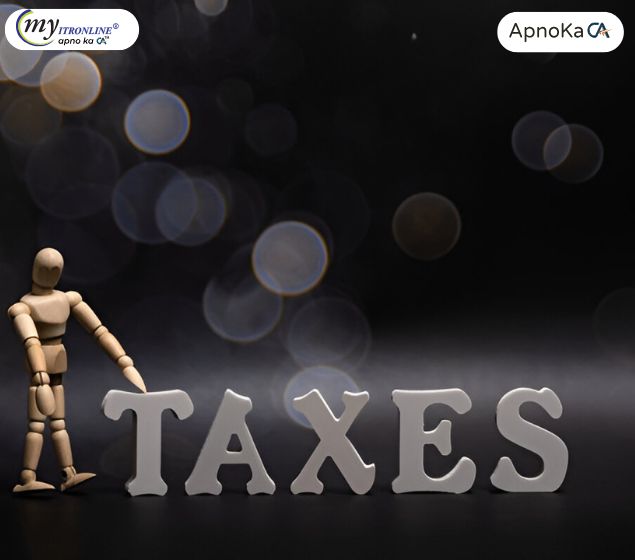# indiantax
12 posts in `indiantax` tag

PAN-Aadhaar Linking: CBDT Offers Major Relief on TDS Demand Notices (2025 Update)
In a major relief for Indian taxpayers, the Central Board of Direct Taxes (CBDT) has waived demands for short TDS deduction arising from payments to inoperative PAN holders. This addresses the widespread issue where deductors received tax notices for not applying the higher TDS rate mandated for unlinked PANs. This blog details the conditions of this relief as per CBDT Circular No. 9/2025, outlines the crucial deadlines like September 30, 2025, and explains the actionable steps for both deductors and deductees to benefit from this waiver and ensure future compliance.
.jpg)
Digital Assets & Tax: What's New for Indian Investors in FY 2025-26?
India's digital asset taxation is maturing. For FY 2025-26, the core 30% tax and 1% TDS on VDAs remain, but expect a wider definition of VDAs and mandatory reporting by exchanges. This blog details current rules and what enhanced compliance means for crypto and other new-age investors.
.jpg)
The Latest on Partner Remuneration: FY 2025-26 Tax Changes Explained
The FY 2025-26 brings crucial changes for partnership firms & LLPs regarding partner remuneration. This blog decodes the new, increased deduction limits under Section 40(b) and the mandatory TDS introduction via Section 194T on payments to partners. It covers who's a working partner, the role of the partnership deed, and essential compliance steps for firms.
.jpg)
New Tax Audit Limits: Your Guide to AY 2025-26 Changes
This blog details the updated Tax Audit rules for AY 2025-26 (FY 2024-25), highlighting changes in turnover limits for businesses opting for presumptive taxation under Section 44AD and other key triggers for mandatory audits.
.jpg)
100% Penalty Alert: Complying with Cash Transaction Limits (269SS, 269T, 269ST)
This blog post provides a comprehensive yet easy-to-understand guide to Sections 269SS, 269T, and 269ST of the Indian Income Tax Act. It explains the rules regarding accepting and repaying cash loans/deposits (above ₹20,000) and receiving cash amounts (above ₹2 lakh) for various transactions. The post emphasizes the severe penalties (100% of the amount) for non-compliance, clarifies exemptions, and details how these transactions are reported in Form 3CD during a tax audit. It concludes with practical takeaways for taxpayers to ensure compliance and avoid issues.
.jpg)
Understanding Agricultural Income Tax in India (FY 2024-25)
This blog post demystifies the tax treatment of agricultural income in India for the Financial Year 2024-25 onwards. It clearly defines what constitutes agricultural income and what does not. The post explains the crucial concept of "partial integration," a unique tax calculation method for individuals with both agricultural and non-agricultural income, illustrating it with a simple example. It also highlights essential compliance requirements like reporting agricultural income in ITR and maintaining records, alongside reasons for the historical tax exemption.
.jpg)
Avoid TDS Trouble with Form 26A
This simple guide explains Form 26A and how it helps TDS deductors avoid being "at fault" under Section 201. It covers the benefits, conditions for filing, how interest is calculated, and important court decisions that provide relief. This resource is clear and easy to understand for managing TDS compliance.
.jpg)
Easy Guide to TCS Form 27EQ
This guide explains TCS Return Form 27EQ for businesses and individuals. It covers its purpose, quarterly due dates, how to pay TCS using Challan 281, and the consequences of late filing or payment, such as interest and penalties. The text uses clear language for easy understanding, helping you stay compliant.
.jpg)
Your ITR: File It or Face These Costly Consequences
This blog post details the various consequences of not filing Income Tax Returns in India, including immediate financial penalties, loss of benefits like carrying forward losses or claiming refunds, and harsher repercussions such as best judgment assessment, heavy fines, and even prosecution.
.jpg)
Easy Guide: Which ITR Form (3 or 4) is Right for You, Freelancer?
This blog explains the key differences between ITR-3 and ITR-4, specifically for freelancers and consultants, outlining eligibility criteria and scenarios to help them choose the correct income tax return form.
.jpg)
URGENT: Don't Hide Foreign ESOPs! Face 10,00,000 Penalty if Undisclosed!
This blog post alerts Indian taxpayers about the important need to report foreign Employee Stock Option Plans (ESOPs) in their Income Tax Returns. It describes what foreign ESOPs are and explains why disclosing them is required under laws like the "Black Money Act." Failing to comply can lead to a large penalty of 10,00,000 and possible jail time. The post also offers straightforward instructions on how and where to report these assets in ITR-2 or ITR-3, urging taxpayers to act quickly and recommending myITROnline for expert help.
.jpg)
India's New Income Tax Regime (Section 115BAC): Your Comprehensive Guide for FY 2024-25 & 2025-26
This comprehensive guide breaks down India's New Income Tax Regime under Section 115BAC, now the default for individuals and HUFs. It details the revised income tax slab rates for Financial Years 2024-25 and 2025-26, highlighting the increased basic exemption limits and the enhanced rebate under Section 87A. The article clearly outlines the limited deductions and exemptions still allowed (e.g., standard deduction, employer's NPS contribution) versus the numerous ones no longer applicable. It concludes by helping taxpayers determine whether the new regime or the old regime is more beneficial for their specific financial situation and explains the process for switching between the two.
